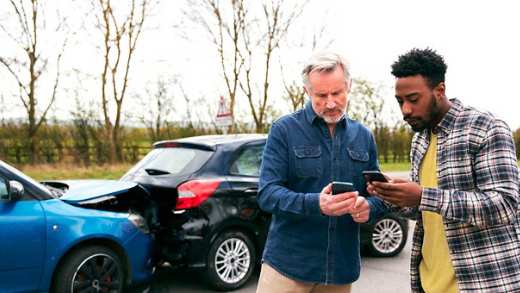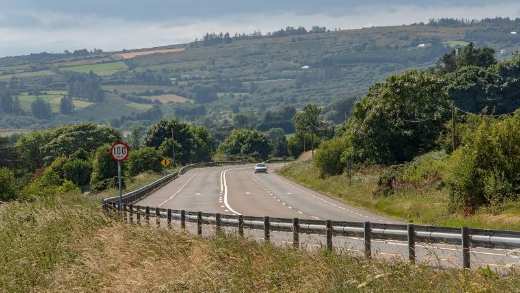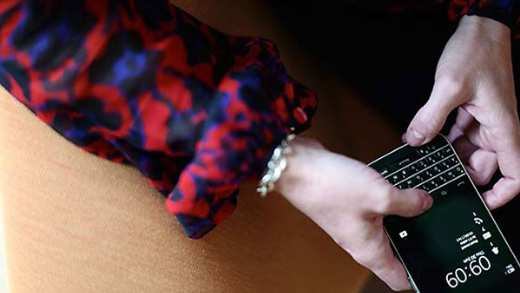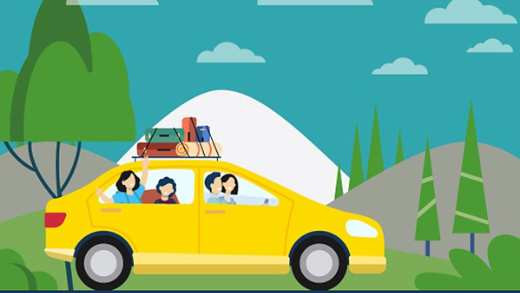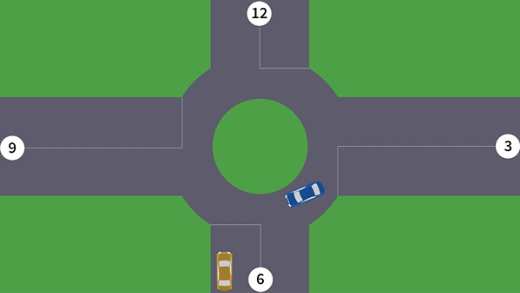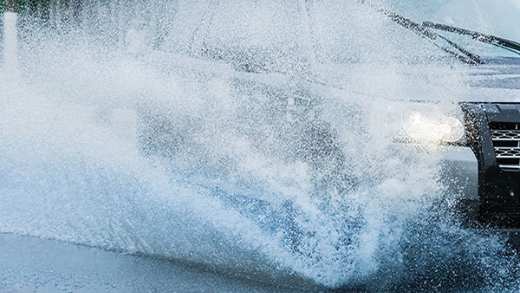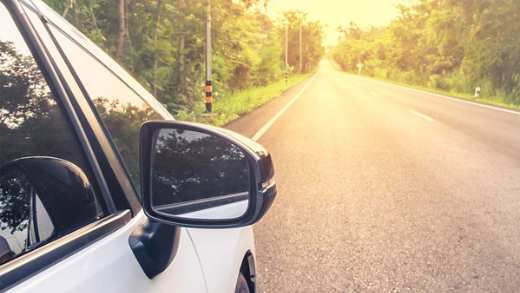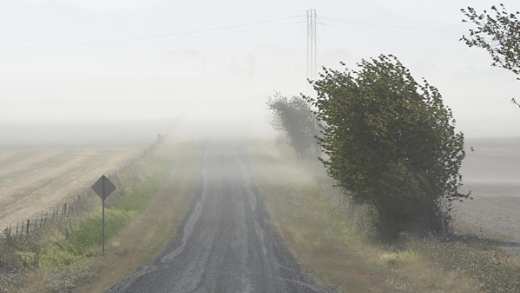The winter months can make driving more dangerous in many ways, but two elements you need to be particularly cautious of whilst driving are ice and snow. To decrease your risk of an accident or damaging your car when driving in snow, follow our tips to stay safe when driving in these slippery conditions. Learn more about how to drive safe on icy roads this winter.

Always plan your journey when driving in winter
- Check weather forecasts and traffics updates so you know what to expect and can be fully prepared.
- Make sure your mobile phone is fully charged and your car has a fully kitted emergency kit. Click here, for our breakdown survival guide.
- Choose a route using main roads where possible as the surface is often better and they are more likely to be gritted.
- Keep clear of secondary roads and high ground, as they are exposed more directly to weather extremes.
Vehicle checks before your journey
- Tyres: Cold weather can cause tyre pressure to decrease, which affects traction and makes driving conditions more dangerous. Make sure the tyre pressure of your wheels matches the manufacturer’s specifications (found in the manual or on the door pillar). Tyre depth should be between 4-6mm.
- Windows: Use a screen scraper or de-icer to clear your windows for full visibility. Do not use boiling hot water on your windscreen as you risk cracking the glass. Check your wipers are functioning fully and filled with screen wash.
- Heater: Learn how the heater in car works, not just to keep yourself warm but also to effectively clear any mist or condensation from your windows, allowing better visibility.
- Coolant: If the weather is very cold, you should check your car’s coolant, or antifreeze, levels. This makes sure your engine doesn’t freeze or overheat. For more details on correct usage of coolant click here.
- Lights: Ensure all lights are working and clean, to optimise their performance.
- Fuel: It is a good idea to keep plenty of fuel in the tank during winter months especially when you may end up having to re-route due to bad road conditions from ice, snow, flooding or fallen debris.
- Snow and ice cover: If ice is on your windows, be sure to remove all of it and not just small areas for you to look through. If there is snow on your roof, you should clear all of it off before you drive. Otherwise it can become dislodged when your car moves, obscuring visibility in parts of your windscreen.
- Ground clearance: Check the ground clearance of your car, which is the distance between the road and the lowest part of your vehicle. The less ground clearance your car has, the more careful you will need to be when driving over ice and snow to avoid scraping the chassis (base) of your car.
- Wheel drive: Front-wheel drive vehicles handle ice and snow better than rear-wheel drive vehicles, because the engine weight is sitting over the front wheels, giving them more grip. It is important to know which one your car is. Rear-wheel drive cars can skid and slide more easily. To alleviate this, you can carry some weight in your boot, as it will put additional weight on the back tyres, giving them better grip on the road.
If your car skids when driving in snow
As the cold, winter weather continues across the country, the topic of icy roads is always on our minds. The topic of how best to correct a skid is one in which people often give or seek advice on.
Remember: ABS does not guarantee a shorter stopping distance in a car.
| Vehicles with ABS | Vehicles without ABS |
| The ABS begins working as soon as you ‘step’ on the brake. Follow these steps: |
Don’t slam on the brakes, but pump them by lifting your foot off and on repeatedly. You are essentially acting as an ABS does by doing this. |
| 1. Step on brake pedal, 2. Stay on brake pedal, 3. Steer around the obstacle. | |
| On icy surfaces, a little bit of steering goes a long way so to avoid head on collisions, do not sharply turn your wheels around a hazard | Steer between the pumps that you make on the brake. To avoid an obstruction, you can apply the steering when you have the brake pedal released |
| Look to where you want to go, and not at what you are trying to avoid. If you look at the obstruction, you will automatically begin to steer in that direction | If your car has traction control (TCS/TC) turn it on. |
Important: If you get into a skid and your car begins to spin, steer gently into the direction of the spin to help your car straighten up.
Safe driving when en route
- Keep your lights on at all time, including during the day.
- Take off in second gear so you avoid wheel spin.
- Drive in the highest gear possible, and at a very slow speed when on flat ground.
- Accelerate and brake very gently and gradually to avoid your car skidding.
- When driving downhill, use 3rd or 4th gear. When turning a corner use a lower gear.
- If your car is an automatic, take a look at the manual override function. This will enable you to select the right gear to avoid braking as it can lead to skidding.
- In icy and snowy conditions, stopping distance can be increased ten fold so keep this in mind. When stationery in traffic, be sure to leave a distance of at least one car length between you and the car in front.
- When approaching traffic lights, begin to slow down early. Your brake lights will indicate you are doing so, giving good warning to traffic behind you and allowing them to do the same. Slowing down with just your gears won’t give the driver behind you any warning and could cause a collision.
- Do not overtake on icy or snowy roads.
- Be particularly careful of roads in shaded areas, either by trees or buildings. It is in these areas that black ice can often be found, as sunlight cannot reach them.t is better to try avoiding a skid completely than trying to manoeuvre your way through one. If braking, steer and accelerate smoothly and you will greatly reduce the risk of skidding.
Keep the following winter survival kit in your car at all times:
- High-vis vests
- Reflective warning triangles
- Cones
- Ice scraper
- Small shovel
- Jump leads
- Torch
- AA Batteries
- First-aid kit
- Multi-tool and window breaker
- Antifreeze
- Clothing (scarves, hats & gloves)
- High energy snacks
It’s easy to become frustrated and impatient when driving in difficult conditions. Remember to keep an eye on your driving; anger, frustration and impatience won’t get you to your destination any faster. Slow and steady wins the race or, in this case, gets you there safely.
Now that it gets dark so much earlier, click here to read our tips for safe driving in the dark.
Buy your Aviva car insurance online and we’ll give you a 15% discount.1


